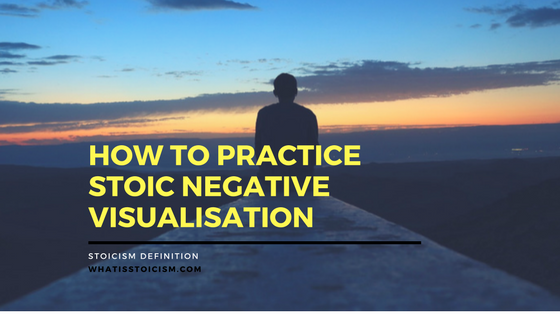For those wondering how to practice Stoic negative visualisation, the good news is that it can easily be done by anyone, anywhere, at any time.
Similar to other ancient Stoic techniques with a virtuous motivation like writing in a journal and practising voluntary hardship, negative visualisation doesn’t require the aspiring Stoic to be in a specific location at a specific time, or to need any complicated equipment.
On the contrary, the techniques are all geared towards making the individual less reactive to circumstances and more capable of functioning well regardless of time, location and resources. I like to think of it as expanding my comfort zone.
In his book A Guide to the Good Life, William B. Irvine says:
To engage in negative visualisation is to contemplate the bad things that happen to us.
Negative visualisation is a technique that encourages us to regularly spend a short amount of time imagining the negative events that could befall us. For example:
- Giving thought to what things you value most in your life and then imagining losing those things.
- Contemplating the unexpected death of a loved one.
- Envisaging what would happen if you lost your job.
It may seem somewhat pessimistic but the result of the exercise is powerful. You can slowly develop a greater appreciation for the things in your life, make the most of the time you have with loved ones and even get good plans in place for when things go wrong.
Practical Tips: How To Practice Negative Visualisation
1. Start by taking stock of things that are valuable to you and note them down. Here are some ideas:
- Possessions – home, vehicles, gadgets, things with sentimental value
- Loved ones – family members, friends, pets
- Work – job, colleagues, boss
- Entertainment – access to the internet, favourite foods, TV shows
- Hobbies – sports, activities, volunteer work
2. If you can think of your own, add it to the categories above.
3. Set a reminder on your phone to schedule Negative Visualisation sessions – don’t overwhelm yourself to begin with, once or twice a week should be enough to get you into the habit.
4. In each session, spend 5-10 minutes working through one of the categories you previously noted and do the following:
- Think of all the things in that category that are important to you, that you have an attachment to.
- Contemplate how you’d feel if that thing was taken away from you or no longer possible.
- Consider how you could minimise the impact of losing that thing. Just having thought about it, you’re now more prepared than you were!
The benefit of these sessions is that you’re likely to feel a greater appreciation for the things you already have in your life as well as preparing yourself mentally should you ever lose them.
The Romans called it premeditatio malorum, the premeditation of evils/troubles. Seneca summarised the exercise beautifully in his Consolation to Marcia:
“Error decipit hic, effeminat, dum patimur quae numquam pati nos posse prouidimus. Aufert uim praesentibus malis qui futura prospexit.”
“He robs present ills of their power who has perceived their coming beforehand.”




